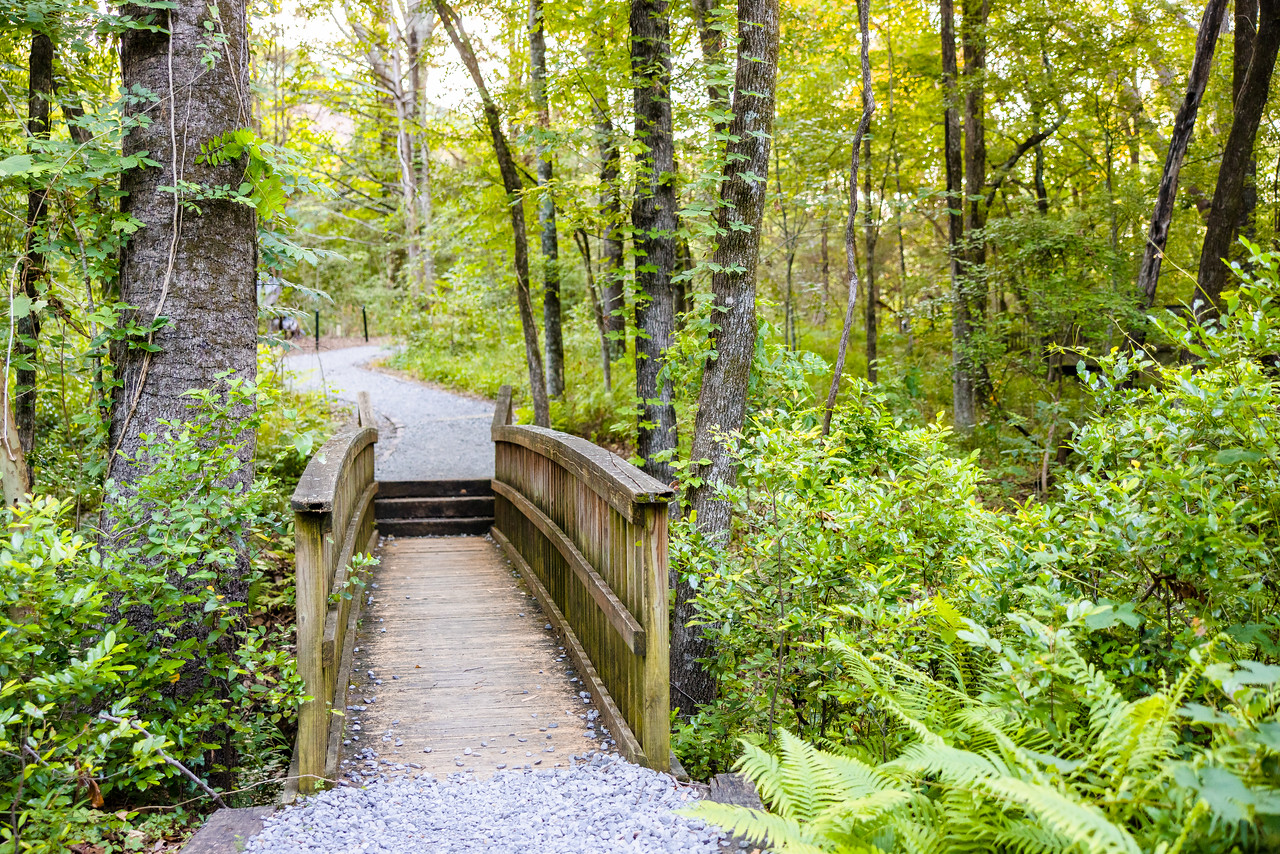
If you have questions about purchasing a license call 1-800-5GO-HUNT.
Some of the best views of Mississippi sunsets, fall foliage, and waterways are appreciated on a trail at a Mississippi State Park. Whether you like to experience a trail by foot or atop a bicycle, ATV, or horse, we have something for you to enjoy.
A Mississippi State Park trail can carry you through deep woods, along beautiful lakes, sandy walkways, and interesting boardwalks. Enjoy the natural sights and sounds of the great outdoors while viewing our state’s abundant wildlife in their natural habitats. From steep hills to coastal plains and from long hikes to short strolls, our trail system offers something for everyone, at any skill level.
Our trails include dedicated Nature Trails, Mountain Bike Trails, Equestrian Trails, and All-Terrain Vehicle Trails (ATV). All trails are marked with trailheads to help you navigate your adventure.

Help us preserve our state’s natural resources and leave no trace! Learn more about the Leave No Trace movement.
New to the outdoors? We've compiled some helpful information about trail safety so you can be prepared and enjoy everything our trails have to offer.
Responsible trail enthusiasts have much in common: They have an appreciation for our public lands and want to enjoy what our public lands have to offer. Smart trail use includes adherence to some basis safety practices. Trails are shared recreation amenities and are accessed by a variety of users at the same time. Please be courteous to all users, and remember that pedestrians have the right-of-way. All trail users should stay to the right on the trail.
Trails are open to and shared by equestrians, Off-Highway-Vehicle (OHV) riders, bicycle riders, runners, and hikers. Trail sharing can and does work when people respect each other and work cooperatively to keep each other safe.
While it's important for people to respect each other on the trail, it's also important to remember that equestrians are dealing with more than just other trail enthusiasts' personalities; they're also working with horses, whose temperaments are as individual as our own. Horses' natural instincts can influence their behavior and affect the way they react to circumstances encountered on the trail.
Similarly, OHV riders, bicycle riders, runners, and hikers must understand that "equestrian only" trails need to be respected for the safety of both horse and rider. These trails offer the opportunity for horsemen to acclimate their horses to basic trail conditions without encountering "unknown threats" that can trigger a horse's natural instinct of flight. When young or inexperienced horses encounter new conditions on the trail--like OHVs, bicycles, runners, hikers, and even certain scents--the flight response can end with disastrous results for the horse or rider.
When equestrians on well-trained horses and other responsible trail enthusiasts meet each other on the trail, the encounters can be enjoyable social exchanges if the groups understand how to work together to keep everyone safe.
Whether biking alone or with your fellow biking friends, it's always important to remember the basics that will keep your cycling both fun and safe. The following points might come across as really obvious, but ignoring or forgetting one of these simple guidelines can turn a great day's cycling into a bit of a nightmare. Here are our suggestions for you:
Remember to use your manners and be friendly to other people you encounter on the trail. Above all, be safe. See you outdoors!